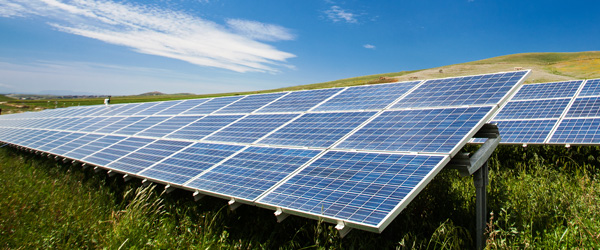How do Solar Panels Work in Shade or Bad Weather?

Solar-powered electricity generation has evolved into one of the most efficient, inexpensive and accessible ways for people to reduce their carbon footprint. But even as technology increases and solar panels become more popular, hesitations remain. For many, the question remains unanswered: How do solar panels work?
Other common uncertainties about solar panels revolve around things like cloud cover and shade, reliability in extreme temperatures, and weather resiliency. Let’s explore some common questions.
How does weather affect solar panel efficiency?
Even though rooftop solar panels are often exposed to inclement outdoor weather conditions, they can withstand them.
Rain
On rainy or cloudy days, photovoltaic panels can produce between 10 and 25 percent of their optimal capacity. The exact amount varies on how dark and heavy the rain and cloud cover is. But rain can also help the performance of your solar panels by washing away dirt, dust or pollen.
High winds
According to CleanEnergyAuthority.com, solar manufacturers must obtain a certification that their panels can withstand winds up to 140 miles per hour. That's the equivalent of a category 4 hurricane. If the roof underneath has been installed and maintained properly, there shouldn't be any problem.
Thunderstorms and lightning
Solar panels are electric devices and therefore, are at risk for voltage surges caused by lightning.A skilled installer will make sure your system is properly grounded to prevent surges. Extra protection may be necessary; a lightning protection system is a smart and easy upgrade.
Snow
“Will my solar panels work if there’s snow on my roof?” is a frequently asked question. Snow on solar panels is not a major problem. While it can block the panels from receiving solar rays, it usually melts off quickly because the panels are pointed directly at the sun.
Hail
The National Renewable Energy Laboratory (NREL) develops standardized industry-quality tests to assure solar panels can survive the harsh environmental conditions to which they are directly exposed, including hail storms. Testing requires shooting ping-pong-ball-sized ice balls at PV modules in multiple places at about 70 miles per hour.
The testing also includes how the panels react to mechanical stress from: hail, being walked on, extreme high and low temperatures, humidity, solar ultraviolet radiation and electrical stress the panels apply to themselves when operating in high-voltage situations.
Extreme hot and cold temperatures
Solar panels work by absorbing the light from the sun — not the heat from the sun — and turning it into usable electricity. PV Semiconductors offer more resistance in extreme heat, making them less efficient when the modules should be most efficient. Thankfully, the amount of resistance is small, reducing efficiency by just about 10 percent. As for cold weather, solar panels will function normally as long as they are receiving the proper amount of sunlight.
Shaded solar panels
There's no question that solar panels need the sun's rays to generate electricity, therefore it's easy to assume that you'll be without power if the sun isn't shining. While solar panel efficiency is best in full, direct sunlight, solar panels in cloudy weather or indirect sunlight still function.
How do we convert sunlight to electricity?
Solar panels produce energy with solar cells. Solar cells are small, square-shaped panel semiconductors made from silicon and other conductive materials manufactured in thin layers. When sunlight strikes a solar cell, chemical reactions release electrons, generating electric current.
The solar panel then converts those photons into electrons of direct current, which flow out of the solar panel and into an inverter and other electrical devices.
How (and why) does shade reduce solar panel efficiency?
Solar panels are composed of individual solar cells, and if those cells are covered by shade, they won't work at 100 percent capacity. If a portion of your solar panels are covered, the other panels will still be operating as normal, though this will decrease the amount of electricity the system produces overall.
Ways to combat shade's impact on solar panels include:
- Microinverters: Microinverters operate like Christmas lights – if one goes out, the rest remain lit. Solar panels with microinverters are best equipped to combat shade issues because each solar panel has an individual microinverter within it. If one panel is completely shaded, it will not have an impact on the others.
- Ground-installed solar panels: You may assume you have to install solar panels on your rooftop – but that's not your only option. A ground-mounted array allows you to have more control over how much sunlight your solar array receives because you can put it in direct sunlight. Explore more benefits to installing ground-mounted solar panels here.
Solar is a Smart Decision.
Every day, 173,000 terawatts of solar energy continuously reach the earth. That’s more than 10,000 times the world’s total daily energy use, making solar energy the world’s most abundant energy resource. The vast majority of the U.S. receives enough sunlight to make solar panels a very plausible option.
Still not sure if rooftop solar is for you? Community solar is another option.
Consistent and predictable power, environmental benefits and the support you provide your local utility are just a few of the things that make solar power solution a smart decision.